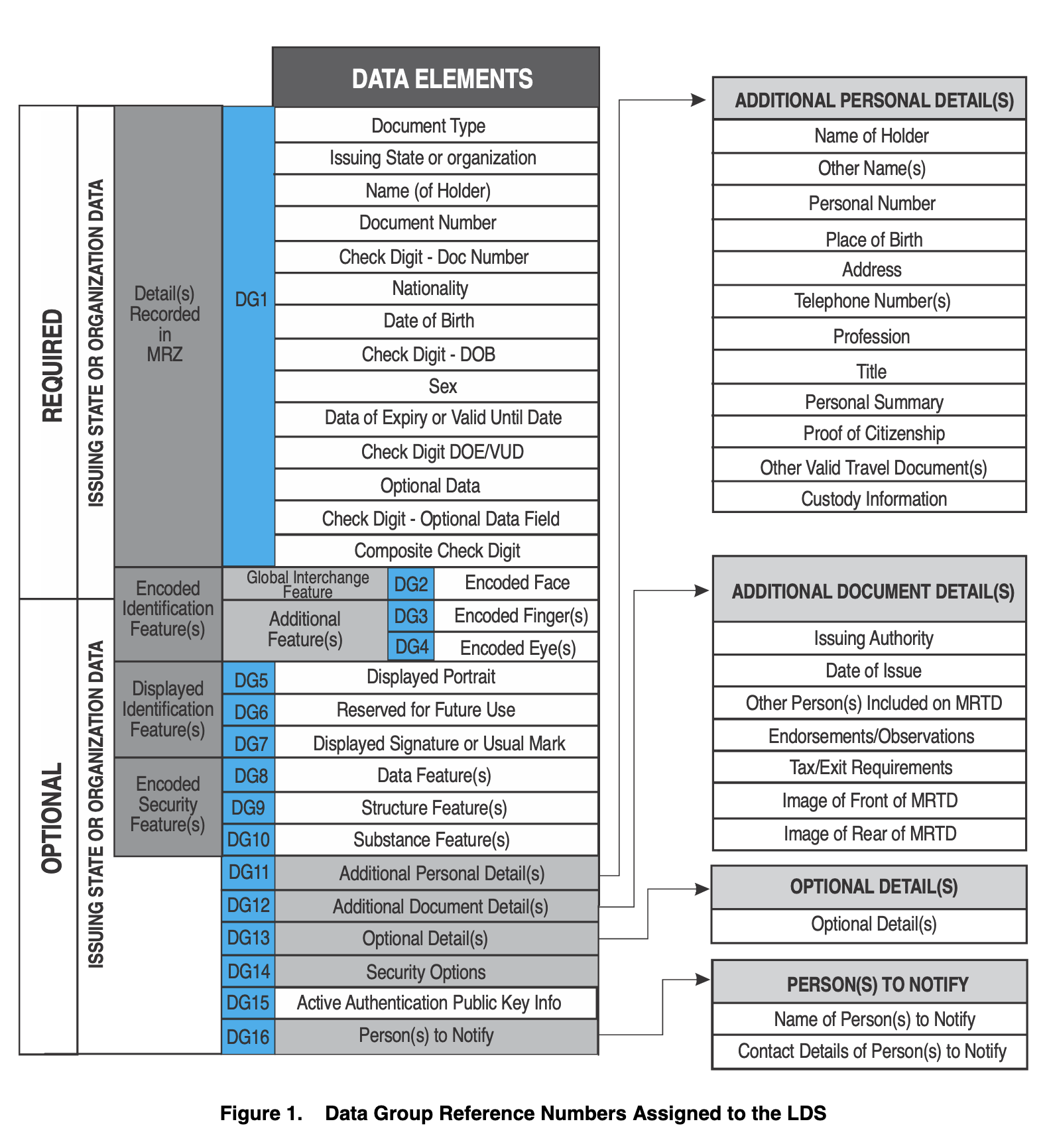- DG3 (Encoded Finger(s)), DG4 (Encoded Eye(s)). This information usually requires Extended Access Control to access due to the sensitive nature of the data, which may not be availablerequires bilateral collaboration between country that issued the passport and any country that wants to all countries you visitaccess it, and as such is unlikely to be read from your passport by anyone but the issuing country. I've not seen any cases of DG4 (Encoded Eye(s)) being used, but many countries include DG3 (Encoded Finger(s)) if the person gave fingerprints when applying for their passport.
- DG11 (Additional Personal Detail(s)) can contain many additional details, including but not limited to Name of Holder, Place of Birth, Address, Profession, or even an image of Proof of Citizenship (though I've never seen that one in the wild). Some passports (Turkey, Belgium, France etc) include this info.
- The Name of Holder included in this section is Unicode, with a length limit of 99 bytes, allowing for most if not all names to be represented correctly in the chip data (unlike the one in DG1, which is ASCII-latinized with a 39 character limit).
- DG12 (Additional Document Detail(s)) can contain information like Date of Issue, Issuing Authority, etc. This information is also provided on some passports (Turkey, Belgium, etc).
- As the files are immutable for security reasons, your passport does not and cannot store your travel history. Individual governments, however, likely keep databases with your travel history and can query these with the information present on your passport.
- There's also various countries that have data-sharing agreements about travelers, so a country you're visiting for the first time may already know your travel history involving some other countries (e.g. US and Canada have an information sharing treaty, and EU's EES (when it finally comes out) will record travels of non-EU citizens in EU, and make it available to all EU countries).
- There's no official way to encode marital status, though it may be encoded as part of title in DG11 or as an optional detail in DG13. It could also be written on the passport's endorsements page.
- Your address at the time of document initialization may be stored on the document itself on DG11. While I don't know if Spain does this, I know that some other countries does this.
Various countries choose to put various different things in the Endorsement/Observations page, which is easier to view for all, but is strictly speaking not the "Main Page", so I'll add a bit on that as well. As this can be on the back sometimes, it could be easy to miss.
UK, to my knowledge, is one of the countries that actively uses this. UK puts your other citizenships (if your name doesn't match them), clarifies that you're not a lord but that you changed your names to include "Lord", states that you're actually a Lord, Doctor, Judge, etc, and probably various other things.

